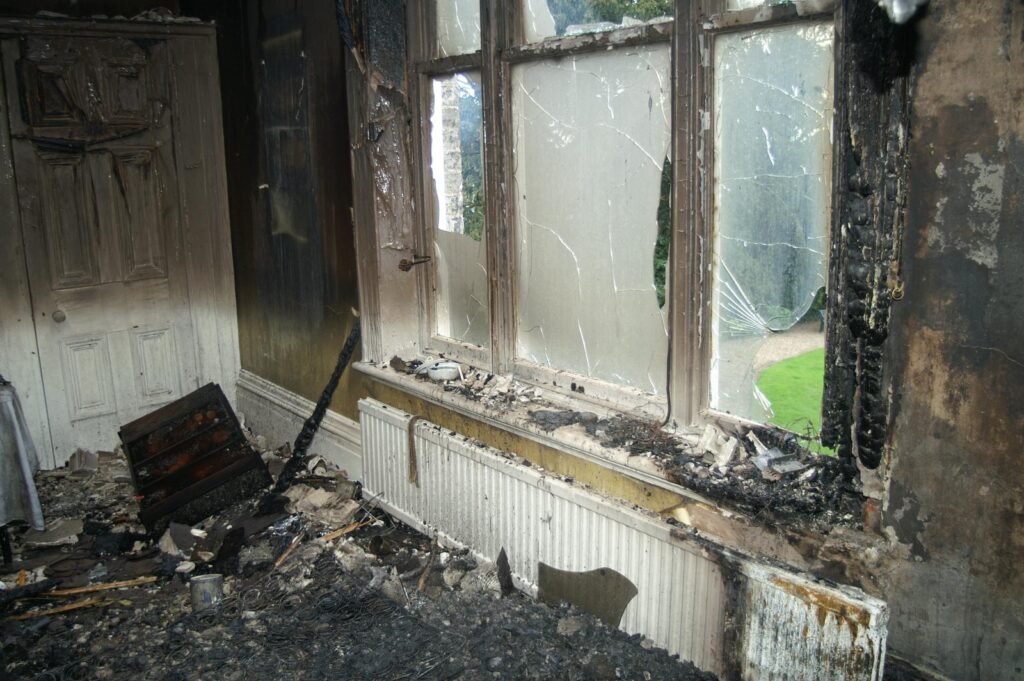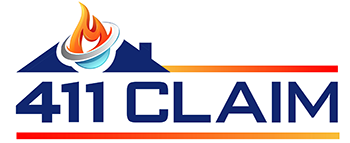
Contents
When fire strikes, the aftermath can feel overwhelming. You need to assess the damage and identify safety hazards before moving forward. Each step in the cleanup process is vital and requires careful planning. By taking the right precautions and using effective techniques, you can restore your property. But knowing where to start and how to navigate the complexities of fire damage cleanup is essential. So, what’s the first step you should take?
Key Takeaways
- Conduct a thorough damage assessment to identify hazards and document findings for insurance claims.
- Secure the property by boarding up openings and consulting professionals for structural integrity checks.
- Utilize effective cleaning and deodorizing techniques, including specialized cleaners and natural agents like baking soda.
- Employ advanced drying methods, such as dehumidifiers and moisture detection tools, to prevent mold growth.
- Maintain organized documentation and clear communication with insurance adjusters to streamline the claims process.
Assessing the Damage and Safety Hazards
When you face fire damage, it’s crucial to assess the situation carefully, as overlooking safety hazards can lead to further injury or complications.
Begin with a thorough damage evaluation to identify structural issues, smoke damage, and water infiltration from firefighting efforts. Look for compromised walls, sagging ceilings, or exposed wiring that could pose risks.
Next, conduct a safety assessment to prioritize your well-being and that of others. Wear protective gear, including gloves and masks, to shield against harmful particles and chemicals. Be cautious of slippery floors and debris that can cause falls.
Document your findings with photographs and notes, as this can aid in insurance claims and recovery efforts.
Securing the Property and Preventing Further Damage
After a fire, your priority should be evaluating the structural integrity of your property to guarantee it’s safe to enter.
Once you’ve confirmed it’s secure, implementing protective measures like boarding up windows and doors can prevent further damage from weather or vandalism.
Taking these steps quickly can help safeguard what’s left and ease your recovery process.
Assessing Structural Integrity
As you begin the fire damage cleanup process, evaluating the structural integrity of your property is essential to securing it and preventing further damage.
Conducting thorough structural inspections can help identify weakened beams, compromised walls, or unstable foundations. These issues not only jeopardize your safety but can also lead to costly repairs down the line.
Don’t hesitate to consult with professionals who specialize in fire safety; their expertise can provide peace of mind.
They’ll assess potential hazards and recommend necessary reinforcements.
Implementing Protective Measures
To effectively protect your property from further damage, it’s vital to implement immediate protective measures following the fire.
You’re not just securing a building; you’re safeguarding your home and the memories within it.
Prioritizing fire safety and emergency preparedness is important. Here are three steps you can take:
Board Up Windows and Doors: Prevent unauthorized access and protect against weather elements.
Remove Hazardous Materials: Safely dispose of any chemicals or flammable items that might pose risks.
Set Up a Temporary Barrier: Use tarps or plastic sheeting to shield damaged areas from rain and debris.
Removing Burned Debris and Contaminated Materials
Fire damage can leave behind a haunting landscape of burned debris and contaminated materials that demand immediate attention.
Your first step is to assess the area for safety hazards, like unstable structures or sharp objects. Wearing protective gear, including gloves and masks, is essential to shield yourself from harmful particles.
Carefully remove burned debris, such as charred wood and insulation, which can pose health risks. Use a shovel or heavy-duty bags to collect these items, ensuring you dispose of them according to local regulations.
Next, identify contaminated materials, like fabrics or porous surfaces that absorbed smoke or chemicals. These should be removed and disposed of properly, as they can harbor unhealthy toxins.
Throughout this process, remember that you’re not alone; community resources and professionals are available to support you.
Cleaning and Deodorizing Affected Areas
Once you’ve cleared away the burned debris, it’s vital to focus on cleaning and deodorizing the affected areas to restore your space. This step is important for eliminating lingering odors and ensuring a safe environment.
Here are three effective strategies to keep in mind:
- Use proper cleaning techniques: Start with a thorough wash of all surfaces using a mixture of soap and water, or specialized fire damage cleaners.
Don’t forget to scrub walls, ceilings, and floors.
- Apply deodorizing solutions: Invest in high-quality deodorizing agents designed to neutralize smoke odors.
Baking soda and activated charcoal are excellent natural options.
- Ventilate your space: Open windows and use fans to circulate fresh air, helping to dissipate any lingering smells.
Water Extraction and Drying Techniques
When dealing with fire damage, effective water removal is essential to prevent further deterioration.
You’ll want to employ advanced drying solutions that not only extract moisture but also inhibit mold growth.
Understanding these techniques will empower you to restore your space efficiently and safely.
Effective Water Removal Methods
Although water damage can be an intimidating aftermath of a fire, understanding effective water removal methods can greatly ease the recovery process.
You’ll want to focus on using appropriate water extraction techniques and moisture detection tools to guarantee thorough cleanup.
Here are three essential steps to take into account:
Assess the Damage: Use moisture detection tools to identify affected areas and prioritize your efforts.
Water Extraction: Utilize pumps and wet vacuums to remove standing water efficiently, preventing further damage.
Dehumidification: After extraction, employ dehumidifiers to draw out residual moisture from walls and floors, reducing the risk of mold growth.
Advanced Drying Solutions
As you tackle the aftermath of fire damage, employing advanced drying solutions can greatly enhance your recovery efforts.
Utilizing innovative drying technologies, like high-capacity dehumidifiers and air movers, will speed up the drying process, preventing further damage.
Advanced moisture control techniques, such as thermal imaging, help identify hidden moisture pockets that traditional methods might miss. By targeting these areas, you’ll minimize the risk of mold growth, ensuring your home is safe and healthy.
Remember, effective water extraction and drying aren’t just about restoring your space; they’re about reclaiming your peace of mind.
Embracing these advanced solutions won’t only enhance your recovery but also foster a sense of belonging as you rebuild your home and life after the devastation.
Restoring Structural Integrity and Stability
Restoring structural integrity and stability after fire damage is vital, especially since compromised structures can pose significant safety risks.
You’ll need to take careful steps to guarantee your home is safe for you and your loved ones. Here are three important actions to reflect on:
Evaluating Foundations: Begin with a thorough inspection of the foundation. Look for cracks or shifts that could indicate serious problems.
Reinforcing Beams: Check the condition of beams and other load-bearing elements. Reinforcing them can help restore strength and prevent future collapse.
Consulting Professionals: Don’t hesitate to reach out to structural engineers. Their expertise can guide you through necessary repairs and guarantee compliance with safety standards.
Addressing Smoke and Soot Residue
Smoke and soot residue can linger long after a fire, making it essential to address these remnants promptly and thoroughly. Not only do these particles tarnish your space, but they also pose health risks.
To begin, employ effective smoke removal techniques like using air scrubbers and HEPA filters. These tools help purify the air, capturing harmful particles.
For surfaces, you’ll need specific soot cleaning methods. Start with dry cleaning sponges to lift soot from walls and ceilings without smearing.
For tougher spots, a mixture of warm water and mild detergent works well. Be sure to test any cleaning solution on a small area first to avoid further damage.
Dealing With Insurance Claims and Documentation
After tackling the remnants of smoke and soot, your focus will likely shift to maneuvering through the complexities of insurance claims and documentation. This part of the recovery process can feel overwhelming, but you’re not alone in this.
Understanding your insurance policy is vital, as it outlines your coverage and the claim process.
Here are three key steps to guide you:
Review Your Policy: Identify what’s covered, including structural damage and personal property losses.
Document Everything: Take photos and make a detailed inventory of damaged items. This evidence will support your claim.
Communicate Clearly with Your Adjuster: Keep your correspondence organized and maintain open lines of communication to facilitate a smoother process.
Navigating your insurance claim may take time, but staying organized and proactive will help you feel more in control during this challenging period.
Utilizing Professional Fire Restoration Services
When a fire disrupts your life, it can be hard to know where to turn for help, but utilizing professional fire restoration services can greatly ease your recovery.
These experts bring a wealth of professional expertise that guarantees a thorough and efficient cleanup. They understand the complexities of fire damage, from soot and smoke removal to structural repairs, and they’ve the tools needed to address the unique challenges you face.
Engaging professionals not only accelerates the restoration process but also minimizes the risk of lingering hazards, such as mold or hidden structural damage.
They guide you through each step, providing reassurance and support during this challenging time. Their knowledge of the latest techniques and safety protocols means you won’t have to navigate this journey alone.
Implementing Preventative Measures for the Future
While you may feel overwhelmed by the aftermath of fire damage, implementing preventative measures can empower you to safeguard your home and loved ones in the future.
Emphasizing fire prevention and safety awareness is vital in creating a secure environment for everyone. Here are three key steps you can take:
Install Smoke Detectors: Make sure these are placed in every room and test them monthly to keep them functional.
Create an Emergency Plan: Develop a clear evacuation route and conduct regular drills with your family so everyone knows what to do in case of a fire.
Educate Your Family: Discuss fire safety practices and the importance of not leaving cooking unattended or overloading electrical outlets.
Final Thoughts
In summary, managing fire damage cleanup might feel overwhelming, but tackling it methodically can lead to effective recovery. While you may worry about the costs involved, investing in professional restoration services often saves you money in the long run by minimizing further damage and ensuring thorough cleanup. By prioritizing safety and adhering to best practices, you can restore your property and peace of mind, allowing you to focus on rebuilding your life after the fire.
Recent Posts
Pricing Insights for Damage Restoration Services
When unexpected events disrupt your life, steering through the costs of damage restoration can feel
Budgeting for Blaze Cleanup: A Trusty Guide
Budgeting for blaze cleanup is like steering through a maze—complex and overwhelming but attainable with
Top Storm Damage Repair Techniques for Homeowners
When storms release their fury, the aftermath of storm damage can feel overwhelming, much like
